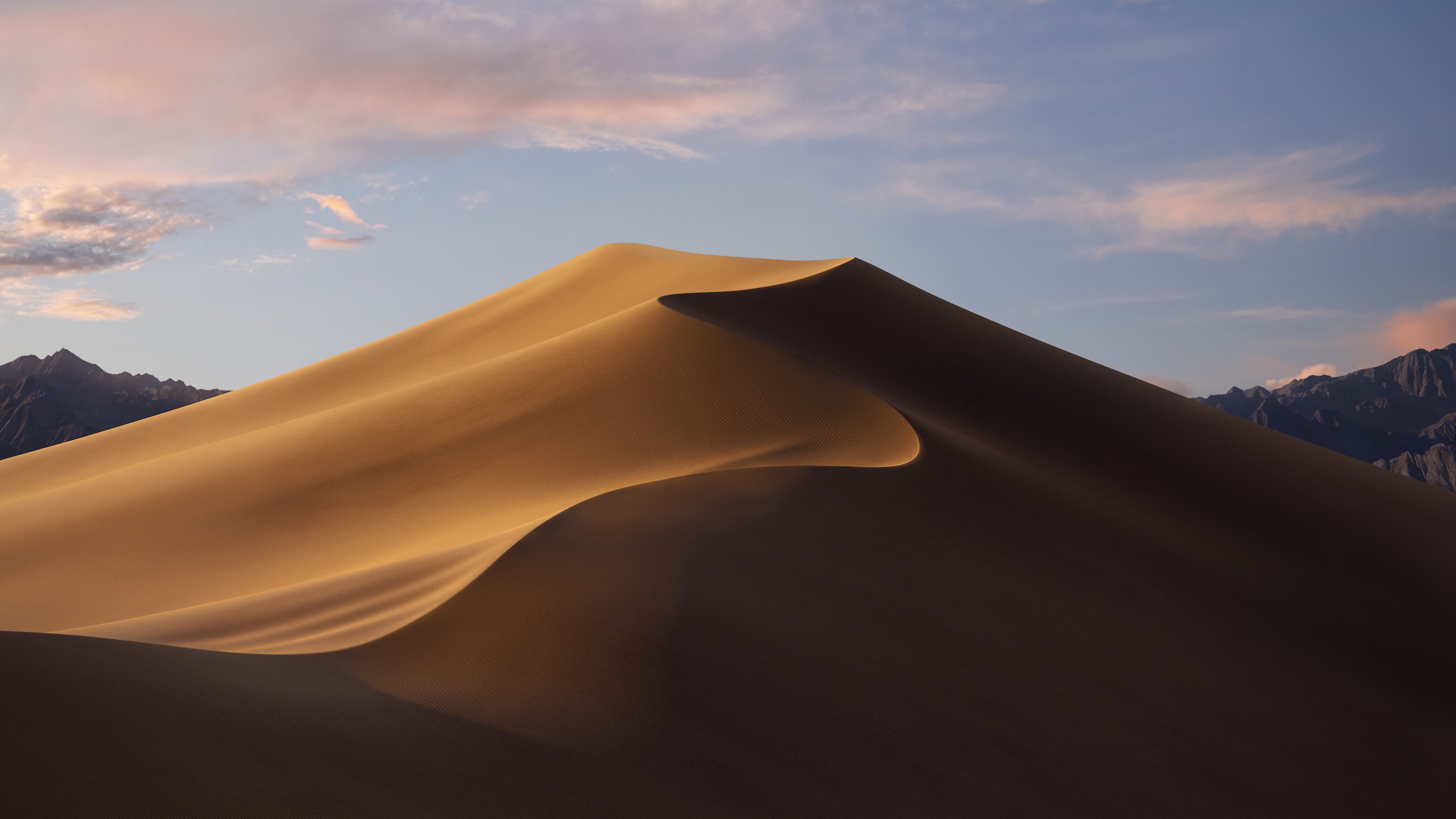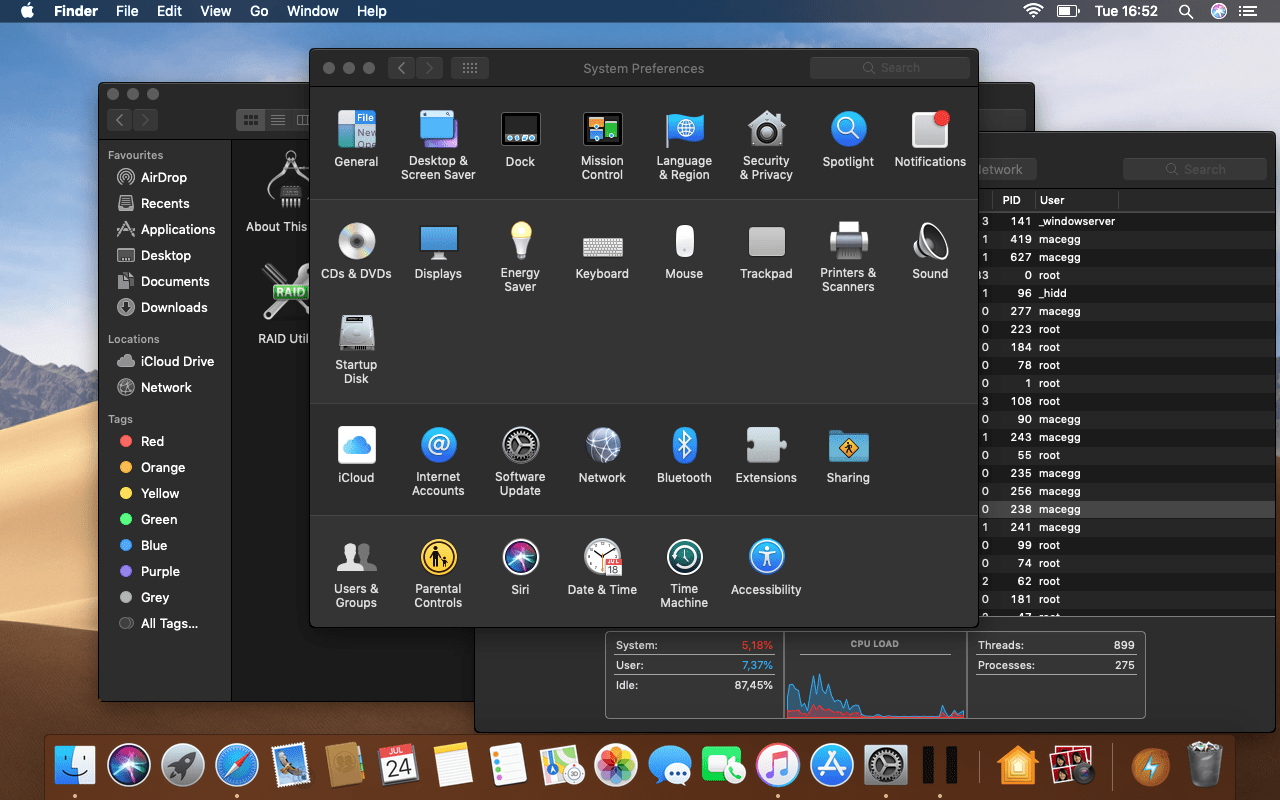Updates
Important Notes:
Mojave Unsupported Mac Forum Hi William; Ref: The Mojave Patcher Tool for Unsupported Macs is available for download from DosDude. This is the same guy that did this for High Sierra, and has supplied a series of other hacks and workarounds for fans of older Apple hardware. MacOS Mojave Patcher is an application that lets you install and run macOS 10.14 on unsupported hardware. It was developed by Dosdude, who also developed similar solutions for Sierra and High Sierra. If necessary, the program can download the latest public beta version of Apple’s servers. Jul 16, 2018 macOS Mojave Patcher is an application that lets you run macOS 10.14 on unsupported hardware. It is developed by developer Dosdude who also developed similar patches for Sierra and High Sierra firmware. It automatically downloads the latest Public Beta version from Apple’s servers and creates a bootable image out of it.
- Using APFS is REQUIRED in Mojave in order to receive system updates via the normal Software Update method. If you choose to continue using macOS Extended (Journaled) as your filesystem type, you will NOT receive System Updates via System Preferences. If you are not using APFS, you can follow the 10.14.1 installation steps below.
- After applying ANY system update via Software Update, re-applying post-install patches using your Mojave Patcher installer volume will most likely be necessary. If you install a software update and the system fails to boot afterwards, this is what needs to be done.
10.14.6

10.14.6 can be updated normally via Software Update if using an APFS volume, and will need to be patched using an installer volume created with Mojave Patcher version 1.3.2 or later after installing.
10.14.5
10.14.5 can be updated normally via Software Update if using an APFS volume, and will need to be patched using an installer volume created with Mojave Patcher version 1.3.1 or later after installing.
10.14.4
10.14.4 adds new changes that ARE NOT patchable by the post-install tool of Mojave Patcher v1.2.3 and older! Before updating to 10.14.4, you you will need to use the latest Mojave Patcher version to create a new installer volume, using the 10.14.4 installer app. Then, update to 10.14.4, either by installing via Software Update, or by just using the installer volume you've created to install.



10.14.3
If you are currently running 10.14.1 or 10.14.2, you can simply use the Software Update pane of System Preferences (if using APFS) to apply the 10.14.3 update. Once the update is installed, you will most likely need to re-apply post-install patches to get the system to boot again. This process is detailed in steps 8 - 10 above. If you are currently running 10.14.0, you'll need to proceed with the 10.14.1 update method described below.
10.14.2
If you are currently running 10.14.1, you can simply use the Software Update pane of System Preferences (if using APFS) to apply the 10.14.2 update. Once the update is installed, you will most likely need to re-apply post-install patches to get the system to boot again. This process is detailed in steps 8 - 10 above. If you are currently running 10.14.0, or are using a non-AFPS volume, you'll need to proceed with the 10.14.1 update method described below.
10.14.1/macOS Extended (Journaled) volumes
The Mojave 10.14.1 update does NOT install properly on unsupported machines, and could result in an unbootable OS. If you want to install the 10.14.1 update (and are not currently running 10.14.1), perform the following steps:
• Download the latest version of Mojave Patcher
• Download the installer using the Tools menu of Mojave Patcher
• Create a patched USB installer
• Boot from that, and install 10.14.1 onto the volume containing an older release.
• Once done, apply the post-install patches, and you should now be on 10.14.1.
- Mojave patcher USB won't boot, stuck on Apple logo. I'm trying to boot into the USB that I created using Mojave patcher on my late 2009 MacBook but after I select the USB I get an infinite loading screen with the apple logo.
- A recent update to the tool also enabled macOS updates to be received through the Mac App Store, so even that aspect is vanilla now. Please note that if you are using a Hackintosh and not a real Mac then this tool is not needed. All that is required is that you no longer use the SMBIOS of an unsupported machine (for example Mac Pro 3,1).
Sierra Patcher will now create a macOS installer on the drive you selected, making edits on the fly so that the resulting installer can be used on unsupported machines. Once the installer is created, Sierra Patcher will say Complete! And your USB drive should now show as OS X Base System instead of its previous name.
macOS 10.14 Mojave is one of the most highly lauded desktop operating systems developed by Apple, Inc. It comes with a slew of new features and enhancements that's geared towards a smoother and more delightful user experience. If you haven't upgraded yet, we'll show you all the possible ways to download macOS Mojave so you can create a bootable macOS USB for installation and start to enjoy the benefits that millions of other users around the world are already seeing from this upgrade, such as Dark Mode, Continuity Camera, Stacks and the Voice Memos app.

Downloading macOS Mojave can get a little confusing because there are two types of downloads. One is the basic stub installer file that's about 22-23 MB, but the full size installer is about 5.8 to 6 GB. The stub installer does fetch all the other required content once you do the installation, but if you need the full installer so you can put Mojave on a different computer, then there are several ways to do that.
macOS Mojave DMG Direct Download Link
The legit way to download or install macOS Mojave provided by Apple is through Mac App Store, where you can get the macOS Mojave install app but it is can be used by other programs for installation. You need addtional settings to make it work. However, some of the tech experts are smart enough and grab the direct download link of macOS Mojave.
macOS 10.14.1 DMG Direct Download Link 1: https://archive.org/download/macOS_Mojave.dmg
macOS 10.14.1 DMG Direct Download Link 2: https://sundryfiles.com/9tz
macOS 10.14.1 ISO Direct Download link (for Windows PC User): https://ia600701.us.archive.org/28/items/MacOSMojave10.14.iso
In addition, you can also download the install dmg from other file hosting or torrent sites. This method is a little risky unless you know the website you're downloading from. For example, some websites that offer direct downloads for macOS Mojave will actually give you version 10.14.1, which is an update rather than the full OS installer. Others might even just serve you the stub installer.
To avoid this, try and read some genuine user reviews before attempting this approach. For that reason, there's no particular site that we recommend. However, that's not to say that there aren't genuine sites that offer the full installer. Most are free, but some might ask for donations via PayPal. If their version works out for you, it's up to you whether you want to pay them a small amount for their trouble.
p.s you need to burn mojave dmg to USB to make it a bootable media for macOS installation. After that, you can use the bootable USB to install macOS on the current or another Mac.
Use Download Manager to Get Mojave DMG Installer
macOS Mojave Patcher is a third-party utility that can be downloaded from the dosdude1 website, and is required to get the full 6GB DMG installer file for macOS Mojave.
As a first step, download the patch utility and run it on a Mac PC or laptop. Note that some Mac computers are not supported by this software, so check the list of compatible devices before getting the app. Within the app, click on the Tools option in the top toolbar and select Download macOS Mojave… The keyboard shortcut for this is Command+D. You'll see a pop-up notification asking you to confirm the download. Click Yes to download the full installer, which should be around 6000MB.
Download macOS Mojave DMG Installer from Mac App Store
If all you need is the stub installer for an upgrade from an existing macOS installation, it's even easier because it's just a question of simple and direct download from Apple's servers. However, this version can't be used for a clean install on a different computer because it won't contain the needed applications to create bootable media on a USB or DVD. For that, you are better off using the first method.
Go to App Store app on your Mac and search for macOS Mojave, then click the Get button next to it. This file will be called Install macOS Mojave.app, and all you need to do is click the Download button in the Software Update utilitiy that automatically launches when you click on Get in the App Store. You will need to enter your Mac credentials when prompted.
Again, remember that this is merely the stub installer, so it's only useful for upgrading current macOS to Mojave, not able to do a clean install on a different computer.
Re-Download Mojave with Mojave Running
Another way to get the stub installer is when you're already running macOS Mojave on your computer. The process is the same as the one described in Method 2, so you can follow the steps described above.
In certain cases, however, this method won't work because the Get button might not be available. It might show you that the OS is already installed, which means the button is greyed out and basically useless to you.
Abort the Reboot after Running macOS Mojave.app
This method is a sort of gimmick that tricks the stub installer into downloading all the required files for a full installation, and then aborting the process right before your computer reboots to actually go into the installation. This is not for the feint-of-heart because it requires commands to be run in Terminal, the command line interface in Mac.
Get the stub installer from the App Store and run it. You'll see several prompts, which you just need to follow by clicking through each. When you see the countdown timer for the reboot, hit the Cancel button.
At this point, all the files for the full installer have been downloaded, but they still need to be packaged in order to work. For this, run the following three commands in Terminal (Applications > Utilities), clicking Enter after each one:
sudo -s
mkdir /Applications/Install macOS Mojave.app/Contents/SharedSupport
cd /macOS Install Data
find . -mount cpio -pvdm /Applications/Install macOS Mojave.app/Contents/SharedSupport
Now go to the directory where you saved the original stub installer, and you'll see that it has magically turned into a 6GB file, which is the full installer.
Summary
These are all the possible ways to download macOS Mojave to your computer so you can create bootable media for a macOS installation. If you're aware of other methods or genuine sites for downloading the full DMG file from macOS Mojave 10.14, please do share it with our readers in the comments section.
How to Install MacOS Mojave on Unsupported Macs with DosDude Mojave Patcherhttps://ift.tt/2zAfYdb
As you may know by now, the list of MacOS Mojave compatible Macs is more strict than previous releases of Mac OS system software, but that doesn’t necessarily mean you can’t install and run macOS Mojave on some unsupported Macs. If you’re an advanced Mac user and you’re reasonably brave (and have adequate backups), then it turns out you might be able to install and run MacOS Mojave on unsupported Mac hardware after all, thanks to a free third party tool from the technical wizard known as “DosDude”.
Apple Support Mojave
Essentially the Mojave Patcher Tool creates a modified USB installer drive (similar to the regular Mojave boot installer drive you can make) which you can then use to install not only macOS Mojave on the otherwise unsupported Macs listed below, but also a series of patched macOS Mojave component files that allow it to boot.
Just a quick word of caution: while you may be able to get macOS Mojave running on an unsupported Mac, this is truly only for advanced users who are adventurous. You certainly wouldn’t want to try this on a Mac that you must have performing in an optimal setting at all times, or on your only computer, but if you feel like tinkering around and running macOS Mojave on an unsupported Macintosh computer you can certainly try it out. Because it patches the operating system and installer, not everything is going to work perfectly on all machines – for example, on some machines networking may not work, or an iSight camera may not work, or GPU acceleration may not function – and there could be various bugs, performance quirks, and other theoretical problems with attempting this, but for the truly tech savvy and brave, the Mojave patcher tool and accompanying walkthrough from DosDude can get the job done.
The DosDude website has both a complete tutorial available at the above link, along with the downloadable patcher tool.
Dosdude also produced a YouTube video demonstrating macOS Mojave on a technically unsupported older MacBook Pro 17″ model from 2009, and Mojave actually appears to run pretty well on the machine:
Thanks to the Dosdude website for the screenshot above of the “About This Mac” screen, which is showing Mojave on an older unsupported Mac.
So while the official list of supported Macs for macOS Mojave is pretty strict in comparison, and you can’t just download Mojave and install it on unsupported hardware without the DosDude utility, the unofficial list of Macs that can run the OS through the tool is much more generous as you can see below, with many perfectly good Macs making the cut.
List of Unsupported Macs That Can Run MacOS Mojave with DosDude Mojave Patcher
Unsupported Macs that apparently can use the Mojave patcher to install macOS Mojave include the following:
– Early-2008 or newer Mac Pro, iMac, or MacBook Pro:
– MacPro3,1
– MacPro4,1
– iMac8,1
– iMac9,1
– iMac10,x
– iMac11,x
– iMac12,x
– MacBookPro4,1
– MacBookPro5,x
– MacBookPro6,x
– MacBookPro7,1
– MacBookPro8,x
– Late-2008 or newer MacBook Air or Aluminum Unibody MacBook:
– MacBookAir2,1
– MacBookAir3,x
– MacBookAir4,x
– MacBook5,1
– Early-2009 or newer Mac Mini or white MacBook:
– Macmini3,1
– Macmini4,1
– Macmini5,x
– MacBook5,2
– MacBook6,1
– MacBook7,1
– Early-2008 or newer Xserve:
– Xserve2,1
– Xserve3,1 Chaos faction 1 download for android.
As you can see, the potential list of Macs that can run Mojave with the assistance of this process is much more thorough than what Apple officially supports. But caveat emptor, as with all software modifications.
Will everything be perfect? Certainly not. Will performance be better than some other versions of Mac OS or Mac OS X? Probably not, it might even be worse. Will everything work exactly as expected, as if it was an official support from Apple? No, probably not. But that doesn’t mean that it’s not worth pursuing for some Mac users, and perhaps the better features in macOS Mojave are too compelling to not try out by venturing into the waters of
If this sounds appealing to you, then check out the Dosdude tutorial and Mojave patch tool. Just remember this is NOT an official patch or release from Apple, and due to the technical nature of this it isn’t for the faint of heart, you will absolutely need above average technical knowledge, patience, and full backups of the computer, as this is basically a hack that allows Mojave to install and run on hardware that Apple does not support.
There’s obviously no tutorial included here in this post as I haven’t personally tried or tested this yet, but if you do, and you get macOS Mojave running on an older Mac, be sure to let us know in the comments below how well it works, and what your experience was. Personally, my older unsupported Macs are still running Snow Leopard, Mavericks, El Capitan, and Sierra, and only the latest machines will run Mojave for my particular setup, but to each their own, and it’s undoubtedly cool that Dosdude has consistently come up with utilities like this to get various versions of Mac OS system software running on hardware that it wasn’t specifically intended for. It’s your Mac so use it however you like and with whatever operating system software release you like best. Enjoy!
Related
Macos Mojave Patcher Tool For Unsupported Macs Usb Won 27t Bootable
Apple
When Does Mojave Support End
via OS X Daily http://osxdaily.comSeptember 27, 2018 at 11:34PM